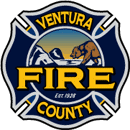Standards & Guidelines
Fire Prevention standards
- 501 Fire Apparatus Access
Provides the minimum requirements for fire apparatus access roads. This standard also includes requirements for access road gates, fire lanes, and turnarounds/turnouts. - 502 Premises Identification
Provides the minimum requirements for property identification. - 506 Knox Rapid Entry System
Provides the minimum requirements for installation and use of the Knox Rapid Entry System. - 509C Plan Submittal Sheet for Residential Fire Sprinklers (Exhibit C)
Plan submittal sheet to be used on all residential fire sprinkler systems. - 515 Defensible Space and Fuel Modification Zones
Provides the minimum requirements for installation and maintenance of defensible space and fuel modification zones. - 516 Composting, Mulch and Organic Processing
Provides the minimum requirements for processing, storage and application of composting, mulch and organic materials. - 517 Application of Mulch and Chips in Defensible Space
Provides the minimum requirements for application of mulch and wood chips within the defensible space of a structure. - 518 Alternate Materials and Methods
Provides requirements for filing a request for alternate materials and methods. - 519 Fire Watch
Identifies when a fire watch is required and the minimum requirements for the fire watch. - 521 Fireworks Requirements
Provides the minimum requirements for the public display of fireworks. - 14.5.3 Fire Hydrants
Provides the minimum requirements for fire hydrants. - 14.6.10 Access and Water Supplies for Public Schools
Provides the minimum requirements for access roads and water supply. - 14.7.2 Installation of Commercial Fire Sprinklers
Provides the minimum requirements for the design and installation of automatic fire sprinkler systems in commercial, industrial and multi-family dwellings. - 14.7.3 Installation of Fire Alarms
Provides the minimum requirements for the design and installation of automatic and manual fire alarm systems and fire sprinkler monitoring systems. - 14.7.4 Fire Extinguishing Systems for Commercial Cooking Operations
Provides the minimum requirements for the design, installation, testing and inspection of fire extinguishing systems for commercial cooking operations. - 14.7.5 High-Piled Combustible Storage
Provides the minimum requirements for high-piled combustible storage.
Fire Prevention Guidlines
- 401 – Special Event Guideline
Provides a summary of the Fire District’s standard conditions for special events. - 403 – Fire Hazard Reduction Program (FHRP) Abatement Assessment and Appeal Process Guideline
Provides a summary of the process to file an appeal to a FHRP abatement assessment. - 404 – Recreational Fire Safety Guideline
Provides a summary of safety guidelines for the use of recreational fires. - 410-Prohibited Plant List Guideline
Provides a guide of prohibited plants for defensible space and fuel modification zones. - 412-Definitions Applicable to the Fire Hazard Reduction Program (FHRP)
Provides a guide to definitions that are applicable to the Fire Hazard Reduction Program (FHRP) - 414 – Re-Opening of Assembly Occupancies During COVID-19 Guideline
Provides a summary of fire safety requirements for the re-opening of an assembly occupancy during the COVID-19 pandemic. - 416 – Landscape and Fuel Modification Zone Plans
Provides a guide for submitting landscape and fuel modification zone plans. - 418 – Defensible Space
Provides a guide for the implementation of requirements contained in VCFD Standard 515. - 420 – Changes in Defensible Space Laws and Regulations
Provides a summary of recent changes in State Laws and Regulations as they relate to how defensible space requirements are applied in Ventura County. - 421 – Combustible Fencing in Defensible Space Zones
Provides a summary of requirements new combustible fencing when located within five (5) feet of a building that is located in a Fire Hazard Severity Zone or local Wildland-Urban Interface zone. - 423 – Defensible Space Maintenance Guide
Provides guidance for maintenance of defensible space. - Crop and Orchard Warming Directive
Provides a guide for the use of small warming fires during frost prevention activities.
Fire Prevention
Administrative Rulings
23-800 Sea Cargo / Metal Storage Containers
Application of the Ventura County Fire Code to prefabricated sea cargo/metal storage containers.
23-801 Portable Fire Extinguishers in Group R-2 Occupancies
Application of the Ventura County Fire Code Section 906.1.
23-802 Construction in Water Impact Areas
Provides the requirements for construction in identified water impact areas.
23-804 Applicability of the VCFC and VCFD Standard 515
Provides a summary of the applicability and requirements for installation, maintenance and spacing of plants, trees, and other vegetation within required defensible space and fuel modification zones.
Fire Prevention Policies
204 Emergency Event / Act-of-Nature Rebuild
Provides the requirements for rebuilding of structures that were damaged or destroyed by an emergency event or act-of-nature.


